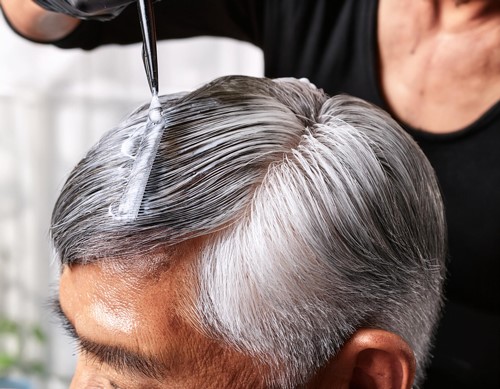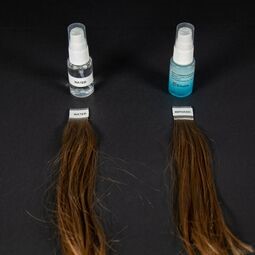- Magazine
- Personal care and consumer goods
- How silicones can help in 50+ haircare
How silicones can help in 50+ haircare?
As we age, hair can become grayer, thinner, drier, and harder to manage – making it more important to choose the optimum haircare product. Silicones have a long track-record of being used in haircare products of all types, and in this blog post, we explain why they are still top performers in haircare for mature adults.
As we pass from our 30s and 40s into our 50s, it’s likely that many of us will become aware of changes in our hair. We might notice that it isn’t as thick as it once was, or that it dries out more quickly… and also that gray hairs are starting to appear when we look in the mirror. These changes – driven by hormonal shifts, reduced sebum levels, and declining melanin production – can make our hair more difficult to manage.
Of course, there’s little we can do to prevent these changes, and indeed, in a spirit of positive thinking, many embrace these signs of maturity! But for those who either want a youthful look or feel happy about their appearance, it’s worth understanding a bit better how to manage these effects.
Managing gray strands in older hair

The most obvious problem posed by aging hair is its color. Caused by a decline in the number of special cells (melanocytes) that produce the pigment melanin, graying hair is a priority for many people wanting to manage the most obvious outward signs of ageing.
One option is to obscure the grayness with dyes. Although this is an effective and popular approach, frequent use of coloring treatments can damage the waxy cuticle – the outer protective layer of the hair shaft. As a result, the hair is more likely to absorb moisture, leading to tangling, frizziness and dullness.
These effects, in turn, require more regular maintenance to control, leading to more physical damage, more moisture uptake, and a spiral of worsening damage to the hair.
Avoiding damage to delicate hairs
But whether or not we’re using dyes, as we age, hairs inherently become weaker and more prone to breakage, which again can lead to moisture getting in. So, either way, it’s important to look afresh for products that are tailored to the more delicate structure of hairs on the 50+ scalp.
And this is where silicones come in. With a safety record going back decades, and with advantages that have been appreciated by consumers for all that time, silicones remain a dependable part of many haircare formulations.
Because they can be tailored to the customer’s need, silicones offer a range of benefits for hair of all types, but they are particularly important for managing our hair as we progress into our more mature years.
Benefits of silicones for haircare in mature adults
So why are silicones so useful for 50+ haircare?
- Smoothness and Shine: They smooth the cuticles, restore shine, and add silkiness and softness to hair, giving it a youthful look and feel.
- Reduced Friction: By reducing friction between hair strands, silicones make hair easier to comb, preventing tangles and minimizing breakage or loss due to daily grooming.
- Frizz Prevention: Silicones restore damaged hair to its natural hydrophobic state, guarding against humidity and preventing frizz.
- Color Protection: They minimize hair dyes from leaching out during washing cycles, making the color last longer. This reduces the frequency of color treatments and the associated damage.
- Heat Protection: Silicones protect hair from the heat damage caused by daily use of styling appliances.
Conclusion

There are plenty of silicones available to meet the specific hair needs of mature adults. For example, water-soluble silicones offer light conditioning for thin and fine hair without compromising volume, while amino silicones target damaged areas, providing care where it’s needed most. Silicone blends are also great for frizz control and leave-on products.
For the 50+ customer, it’s important to use products that respect the hair’s natural condition. This often means using gentle products that take hair color into consideration, and it may involve switching to different types of products. Silicones play a key role in achieving this by protecting the cuticle and scalp, reducing friction, and – most importantly for many – extending the time between color treatments. In this way, silicones help maximize performance for more mature customers, regardless of how they prefer to manage their changing hair.
